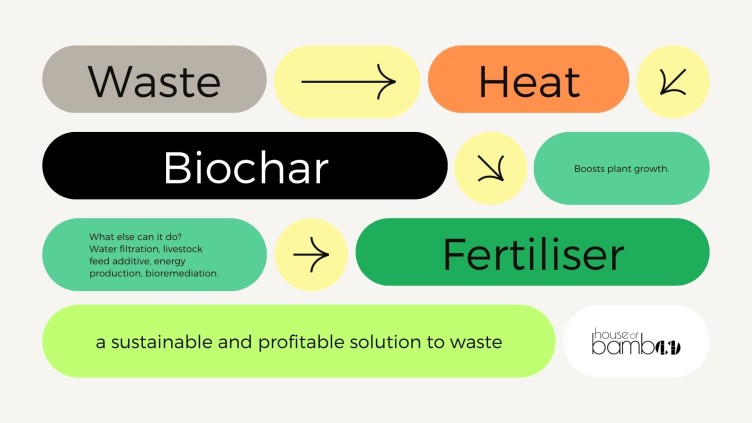Biochar: Why Black Is The New Green
Biochar made from bamboo offers a sustainable and profitable solution to waste and is the ultimate by-product.
Biochar – a ‘supercharged-organic-charcoal’ famous for its ability to enrich soil – is having a bit of a moment.
Once a relatively small cottage industry, Biochar has been drawn into the spotlight as research and investment in carbon removal continue to grow.
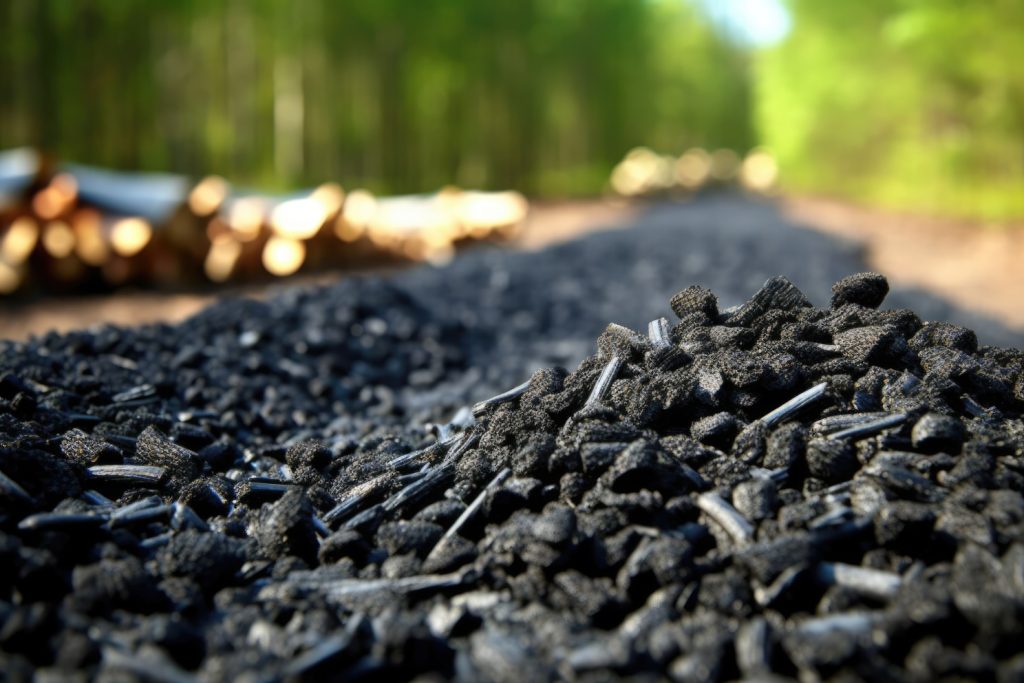
So why biochar?
The production of biochar has the ability to turn organic waste into stable carbon-rich charcoal that is refractory (resistant to decomposition). The resulting product can then be used as a natural fertiliser that locks carbon away from anywhere between 100 to 1000 years with virtually no risk of reversal.
How is it made?
Biochar uses agricultural and forestry waste like wood chips, bamboo trimmings, crop residue and animal manure. The process starts with heating the waste to a temperature between 400°C to 700°C in a controlled environment with minimal oxygen (in order to restrict oxidisation).
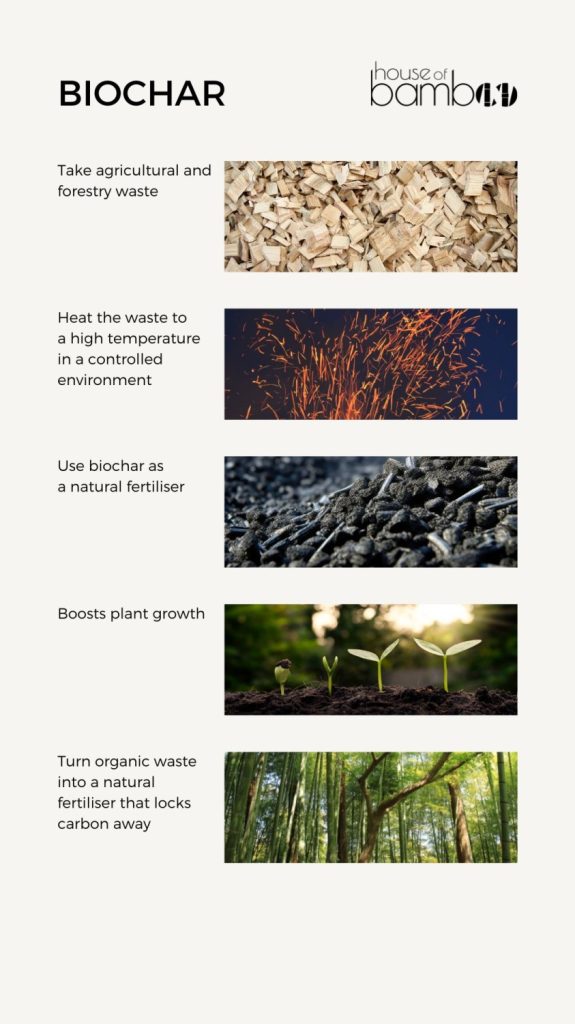
Is biochar new?
Biochar’s recent history began with the discovery of the Amazonian Terra Preta (Dark Earth) soils which date back to 450 BCE. These ancient soils were found to be enriched with a high concentration of charcoal and other organic matter.
It is not known whether the soils were intentionally made or were a by-product of cooking practices but the high fertility rate of this soil is undisputed- and is still present to this day.
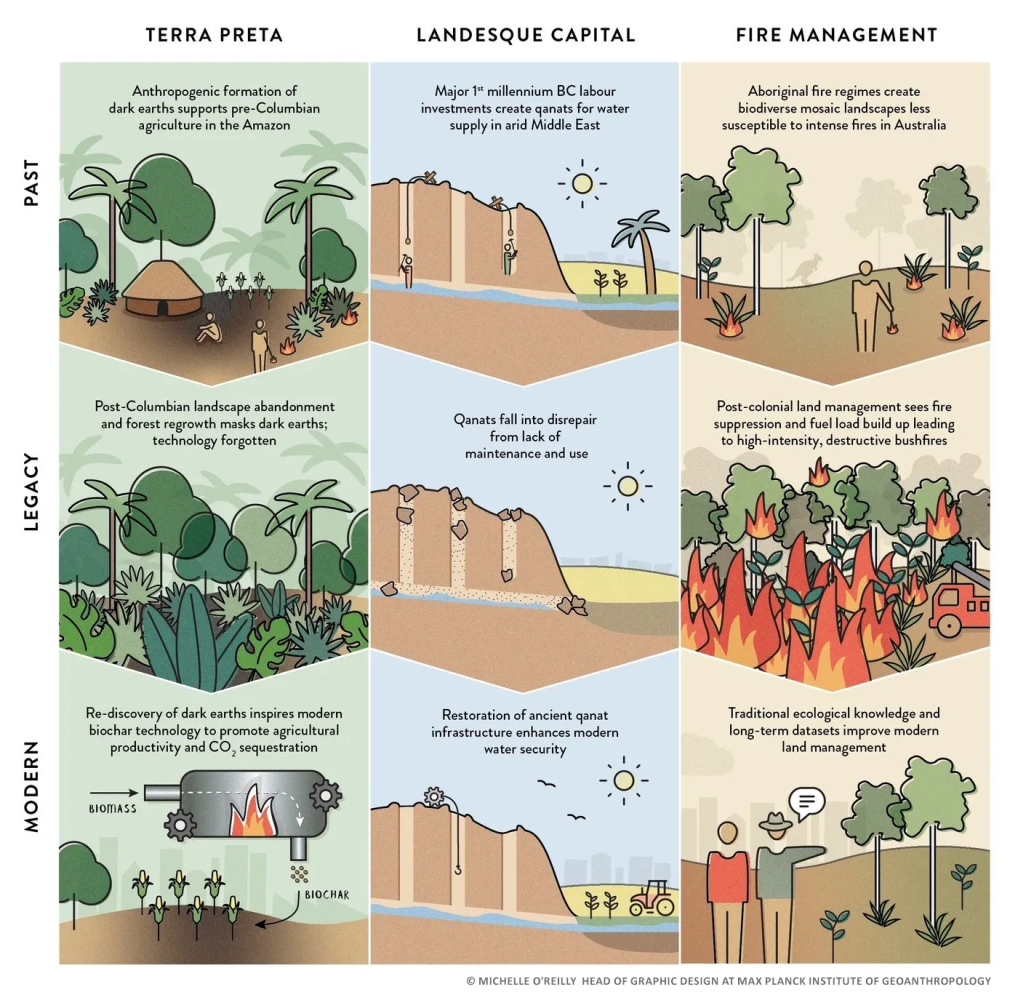
How do you use it?
Biochar is a soil amendment (something added to soil to improve its function) and is an extremely porous (sponge-like) substance that sucks in nutrients. These nutrients attract microorganisms and provide them with a suitable habitat. This in turn boosts plant growth. The stronger the growth-the less reliance is needed on man-made fertiliser.
What else can it do?
Water Filtration When Biochar is used in agriculture it can help reduce nutrient leaching and runoff which in turn improves water quality.
Livestock Feed Additive The use of biochar has also been shown to increase feed efficiency and weight gain of animals.
Energy Production The process of pyrolysis used to produce biochar also yields bioenergy in the form of syngas (synthesis gas). This syngas can be utilized as a renewable energy source.
Bioremediation Biochar has the potential to adsorb and immobilise certain pollutants and contaminants in soil, helping in the remediation of polluted lands.
The Island Of The Dead…Blue Gum
How a biochar project could help salvage 12 million trees
Before the British arrived in Australia, Kangaroo Island was known as Karta Pintingga – The Island of The Dead. It was named by the Kaurna Peoples who lived on the mainland and named it that way after sea levels rose, cutting it off from the mainland.
Kangaroo Island is Australia’s third largest island and sits just off the coast of South Australia. The island has a population of 5000 and is roughly the size of Bali.
The island’s economy has been driven primarily by tourism, agriculture, forestry and fishing. However, the bushfires of December 2019 saw half the island (210,000 Ha) burned and a timber plantation of 12 million Tasmanian Blue Gum become unsalvagable.
Kiland, formerly known as Kangaroo Island Plantation Timbers, the owner of the plantation decided to turn the timber into biochar.
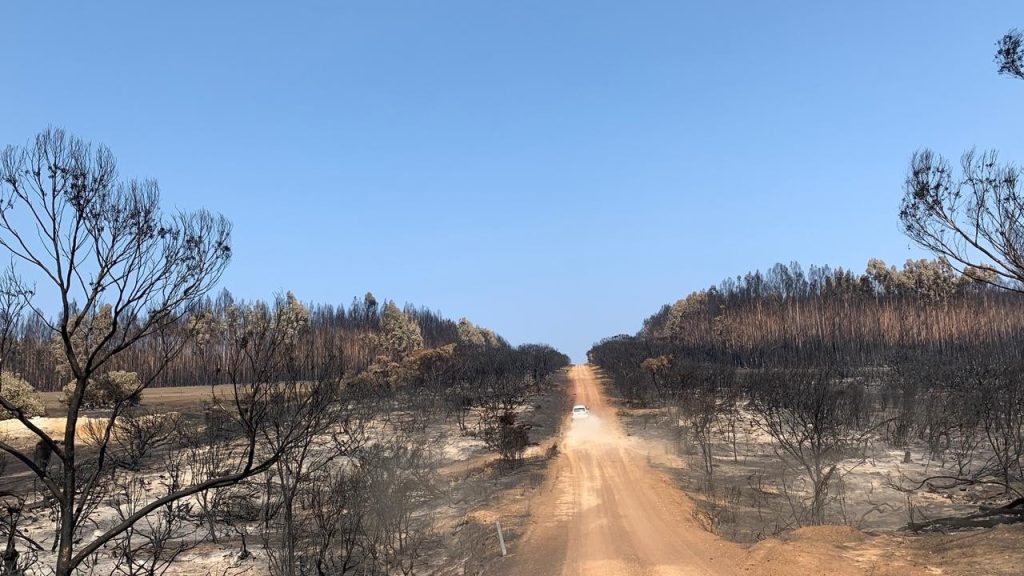
The Australian Financial Review called this Australia’s ‘largest carbon project’. Here is a quick summary:
- 1000 tonnes of biomass will be processed per day.
- 900,000 tonnes of biochar will be produced for sale.
- 1.8 million carbon removal credits will be generated (2 credits for every tonne of biochar)
- The carbon removal will be equivalent to the annual emissions of 390,000conventional automobiles.
Without the decision to turn the trees into biochar, the only other option would have been to burn off the unused timber. This would have resulted in a substantial amount of carbon emissions released into the atmosphere.
Why Bamboo Is The Perfect Green Investment
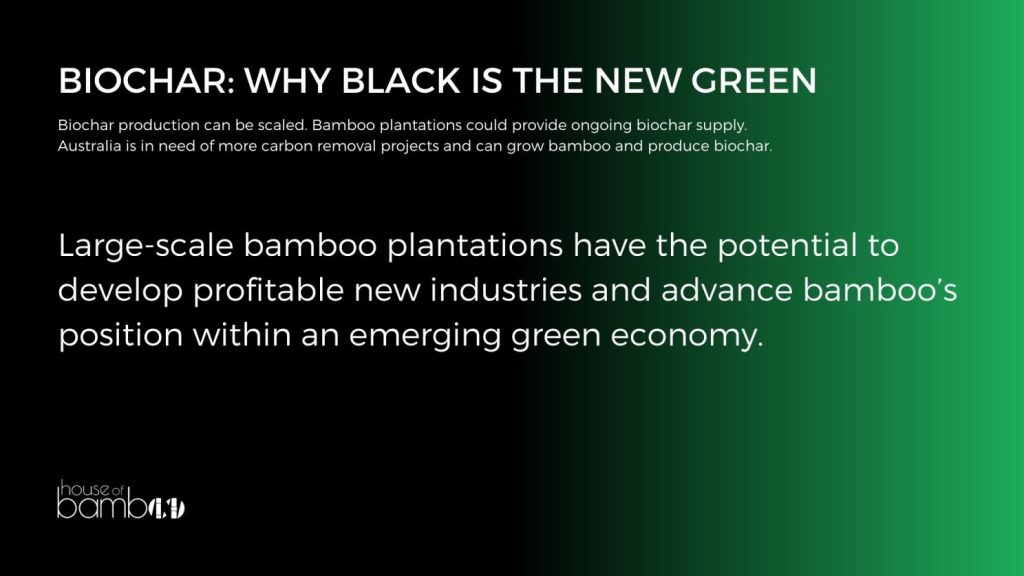
www.australianbambooplantations.com.au
Large-scale bamboo plantations have the potential to develop profitable new industries and advance bamboo’s position within an emerging green economy.
We have looked at the benefits of biochar and also seen how biochar production can be scaled. Bamboo plantations could provide ongoing biochar supply but we must create an industry first.
BambooLogic – ‘the first large-scale and industry-oriented bamboo plantation company in Europe’ is an example of another step forward in bamboo’s evolution. BambooLogic’s objective is to grow bamboo specifically for the purposes of carbon removal and aims to sequester 1 million tonnes of CO2 within the next 15 years.
Growing bamboo specifically for these purposes is a new endeavour and we must include these options when looking for a scalable approach to carbon capture for Australia.
Bamboo plantations satisfy the tenets of a green economy through:
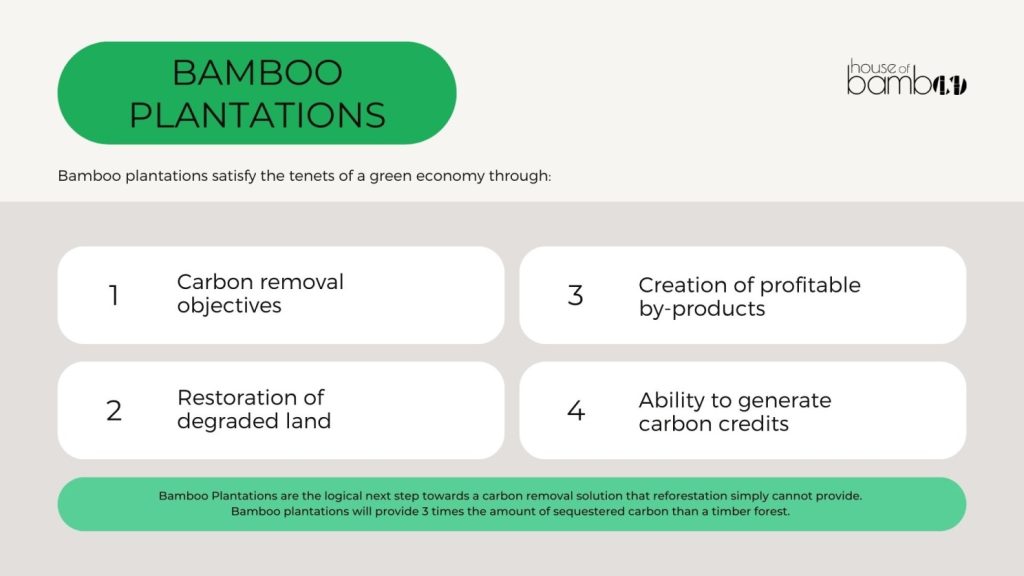
www.australianbambooplantations.com.au
- Carbon removal objectives.
- Restoration of degraded land.
- Creation of profitable by-products.
- Ability to generate carbon credits.
Australia is in need of more carbon removal projects. Currently, reforestation projects are the only type of forestry project eligible for carbon trading. Reforestation is the process of converting land that had previously been cleared back into tree production.
Australia is the world’s 6th largest country. By planting bamboo in addition to reforestation projects we could take advantage of the sheer size of the land mass. Additionally, bamboo plantation efforts would provide value-added benefits far sooner than those of a reforestation project:
- It takes a timber forest approximately 15 years to be able to harvest any wood for construction.
- For a bamboo forest, it takes 5 years.
- A bamboo plantation will produce in 7 years what would normally take 30 years in timber forestry.
- Biochar is made from bamboo trimmings. Within a bamboo plantation setting, trimming usually begins within the 2nd or 3rd year as new bamboo culms become established. This means that we can begin to earn revenue from a bamboo plantation within 2 years.
What do we need to do?
We need to stop questioning the potential of bamboo. The economic and environmental argument for bamboo forestry is clear. Bamboo plantations are a logical advancement and can service a need in the same way that Cross Laminated Timber and Engineered Bamboo are servicing the construction industry. Green buildings would not exist without those advancements.
Bamboo Plantations are the logical next step towards a carbon removal solution that reforestation simply cannot provide. Bamboo plantations will provide 3 times the amount of sequestered carbon than a timber forest. Australia can grow bamboo and produce biochar. We have the available land. All we need now is the courage.

Belli Park, Bamboo Plantation in Queensland, Australia
www.australianbambooplantations.com.au
Jennifer Snyders
BScArch | CEO
